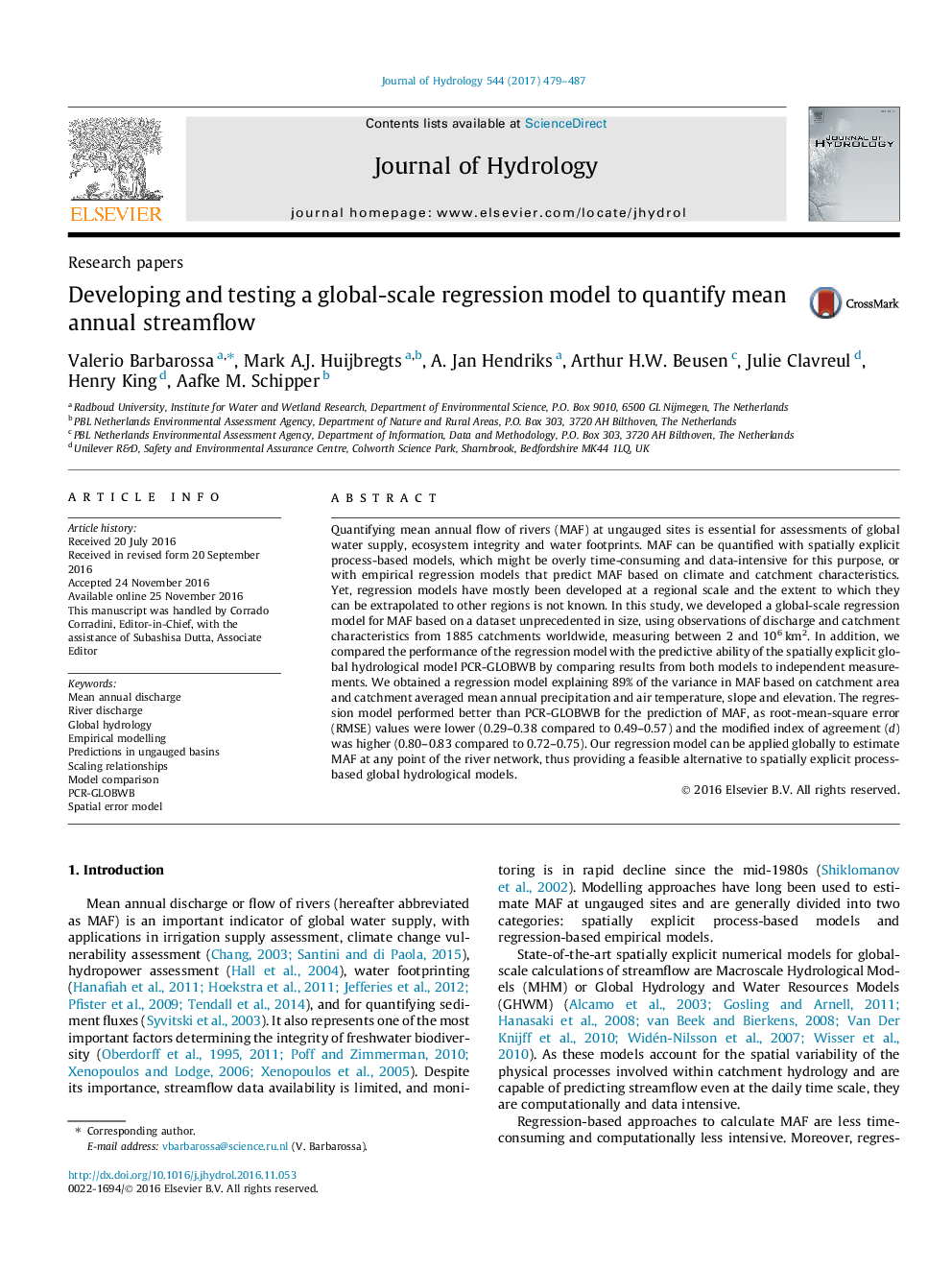| Article ID | Journal | Published Year | Pages | File Type |
|---|---|---|---|---|
| 5771361 | Journal of Hydrology | 2017 | 9 Pages |
•We developed a global-scale regression model to predict mean annual flow (MAF).•The model explained 90% of the variance in MAF based on 1885 observations worldwide.•The model outperformed the process-based global hydrological model PCR-GLOBWB.
Quantifying mean annual flow of rivers (MAF) at ungauged sites is essential for assessments of global water supply, ecosystem integrity and water footprints. MAF can be quantified with spatially explicit process-based models, which might be overly time-consuming and data-intensive for this purpose, or with empirical regression models that predict MAF based on climate and catchment characteristics. Yet, regression models have mostly been developed at a regional scale and the extent to which they can be extrapolated to other regions is not known. In this study, we developed a global-scale regression model for MAF based on a dataset unprecedented in size, using observations of discharge and catchment characteristics from 1885 catchments worldwide, measuring between 2 and 106 km2. In addition, we compared the performance of the regression model with the predictive ability of the spatially explicit global hydrological model PCR-GLOBWB by comparing results from both models to independent measurements. We obtained a regression model explaining 89% of the variance in MAF based on catchment area and catchment averaged mean annual precipitation and air temperature, slope and elevation. The regression model performed better than PCR-GLOBWB for the prediction of MAF, as root-mean-square error (RMSE) values were lower (0.29–0.38 compared to 0.49–0.57) and the modified index of agreement (d) was higher (0.80–0.83 compared to 0.72–0.75). Our regression model can be applied globally to estimate MAF at any point of the river network, thus providing a feasible alternative to spatially explicit process-based global hydrological models.
